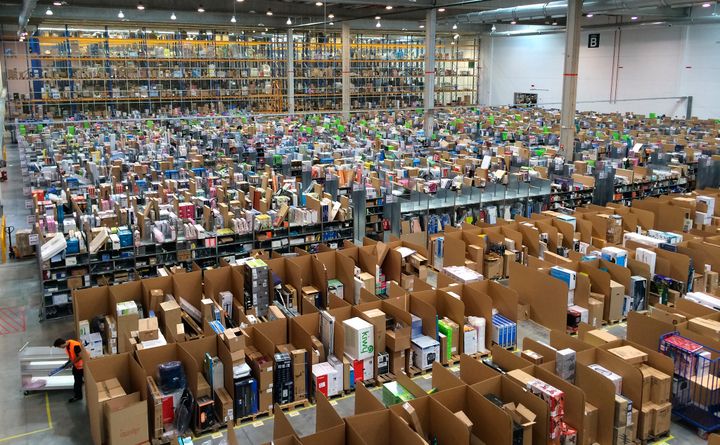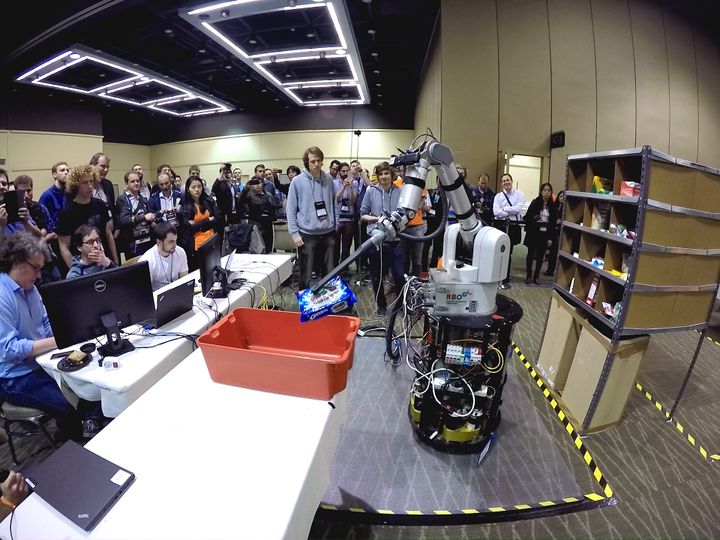
Amazon is looking to increase its ability to serve customers from warehouses while reducing its need to use humans. The shopping giant has been under fire in recent years for working conditions at its warehouses, from publications such as Gawker and Mother Jones The workers have expressed dissatisfaction with the repetitive nature of the work, the long hours and low pay -- among other problems.
The company has said that it does take steps to promote worker safety, and perhaps as a part of it, Amazon is considering using robots to do more of its work. Robots is something that the company is asking the greater community to help them with, and that was an impetus behind the Amazon Picking Challenge. Unlike humans, robots don't get tired and aren't subject to ergonomic concerns.
"Amazon's automated warehouses are successful at removing much of the walking and searching for items within a warehouse. However, commercially viable automated picking in unstructured environments still remains a difficult challenge," Amazon wrote on its web page about the challenge.
The first challenge, according to Amazon, was designed to not be hard, relatively speaking. The robots would be placed in front of a shelf that didn't have a lot of items on it -- each bin may only have one thing in it, and some would have several copies of one item. Only a few would have different tpes of items in it. The competition would take place at the International Conference on Robotics and Automation (ICRA).
The robots didn't have to look human, but they did have to think for themselves. The scores would be alloted based on how many items they would pick in a specified time, and if the robots chose poorly, they would lose points.
"This event should be attractive to members of ICRA and the general robotics community because it focuses several longstanding technical challenges on a single, clear industrial application," Amazon wrote. "Moreover, advances in generalized picking will be directly applicable to other domains, like service robotics, in which robots must deal with a large number of common household items; picking an item in a warehouse is essentially the same as picking a book off a shelf in a home."
Amazon also made available a list of the items that teams would be expected to sort, including links to the individual web pages where the products were being sold. These items ranged from glue to sharpies to books to garbage cans. The items were designed to be light enough so that a person of average height (170 centimeters, or 67 inches) could pick them up with one hand.
As for what sort of stocking challenge to expect, the contestants were expected to have a range of bins that ranged from singles, to doubles, to multi-items. At least two bins would have only one item, two bins would have two items, and two bins would have three or more items. Each item needed to be removed from the shelf into an order bin. The bin would sit on a table either provided by the organizers or the teams themselves, depending on what the team wanted.
The requirements, challenging as they were, attracted 28 competitors to the competition that took place at the conference in Seattle in May. To figure out the size and shape of the items, wrote Engadget, the robots used technologies such as lasers or tape measures.

An Amazon warehouse. Credit: Wikimedia Commons
It was Team RBO that easily took the competition over second-place winner Tim MIT and third-place winner Team Grizzly. According to Engadget, Team RBO at the Technical University of Berlin had a 60-point lead over its closest competitor. In this case, team member Roberto Martin-Martin told Engadget, what made Team RBO stand out was an omnidirectional base that let them move an arm in ways to let them increase their workable space.
"The arm itself can mimic the actual human limb with its seven degrees of freedom," Engadget wrote. "It picks things up using a suction cup, which can conform to the shape of different objects, connected to a vacuum. The team also installed a number of sensors on the robot, including one for object recognition, another to find the base's position in relation to the shelf and a third one to make sure the arm doesn't exert too much force when handling items."
For its efforts, Team RBO received $20,000. As a caution, each of the competitors still remains slower than humans, but it's a start. How do you think we can improve robot technology to do better?
Top image: Team RBO, the winning entry in the Amazon Picking Challenge. Credit: TU Berlin








